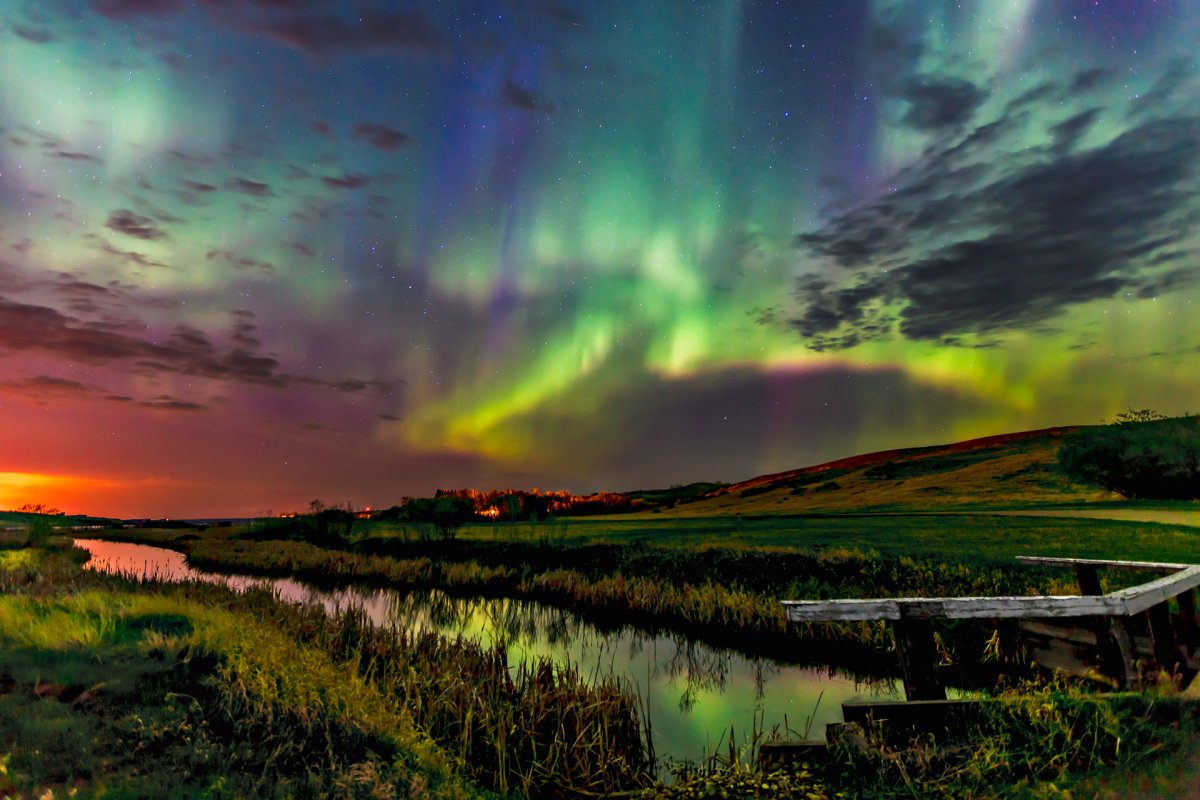If you missed out on Tuesday night’s display of the northern lights, don’t fret: tonight you get a second chance.

Last night Earth was buffeted by particles travelling on along the high-speed solar wind. People in high latitudes — including parts of Canada — were treated to a lovely display of northern lights, or aurora borealis, as those particles interacted with Earth’s magnetic field. The result? A beautiful, dancing display of lights.
The great news is that this storm, though subsiding somewhat, is expected to continue into Wednesday night.
Though most often moderate geomagnetic storms — which produce the northern lights — are relegated to the far north, these kinds of moderate storms cause the aurorae to dip down to more southerly latitudes. Fortunately for Canada, our whole country is in northern latitudes (it may be more challenging to see them in southern Ontario and light-polluted cities) which allows us to see them fairly often.
Wednesday night’s display could go much farther south than just Canada. According to the U.S. Storm Weather Prediction Center, the colourful show may be seen all the way south to New York, Wisconsin and Washington State.
WATCH: Incredible Northern Lights display lights up the skies over Iceland

As of Wednesday afternoon, the Kp index — which measures a geomagnetic storm’s strength — was at six, considered active.
If you want to see them for yourself, first, hope that you have clear skies. If you do, you should get yourself to a dark sky site. Oftentimes, even the faintest of displays can be seen after your eyes adapt to the dark (a half-hour or so with no light). You could always set up a camera to try to photograph them. Just be sure you use a tripod, a high ISO setting (400-800) and a long-exposure (10 to 15 seconds to avoid star trails).
If you can’t see them, you could always visit Canada’s AuroraMax site that shows a live display. There is also Lights Over Lapland which shows the northern lights over Abisko, Sweden (just be sure it’s still nighttime!).
Here’s a display from parts of Europe, Norway and Sweden on Wednesday night.


Comments